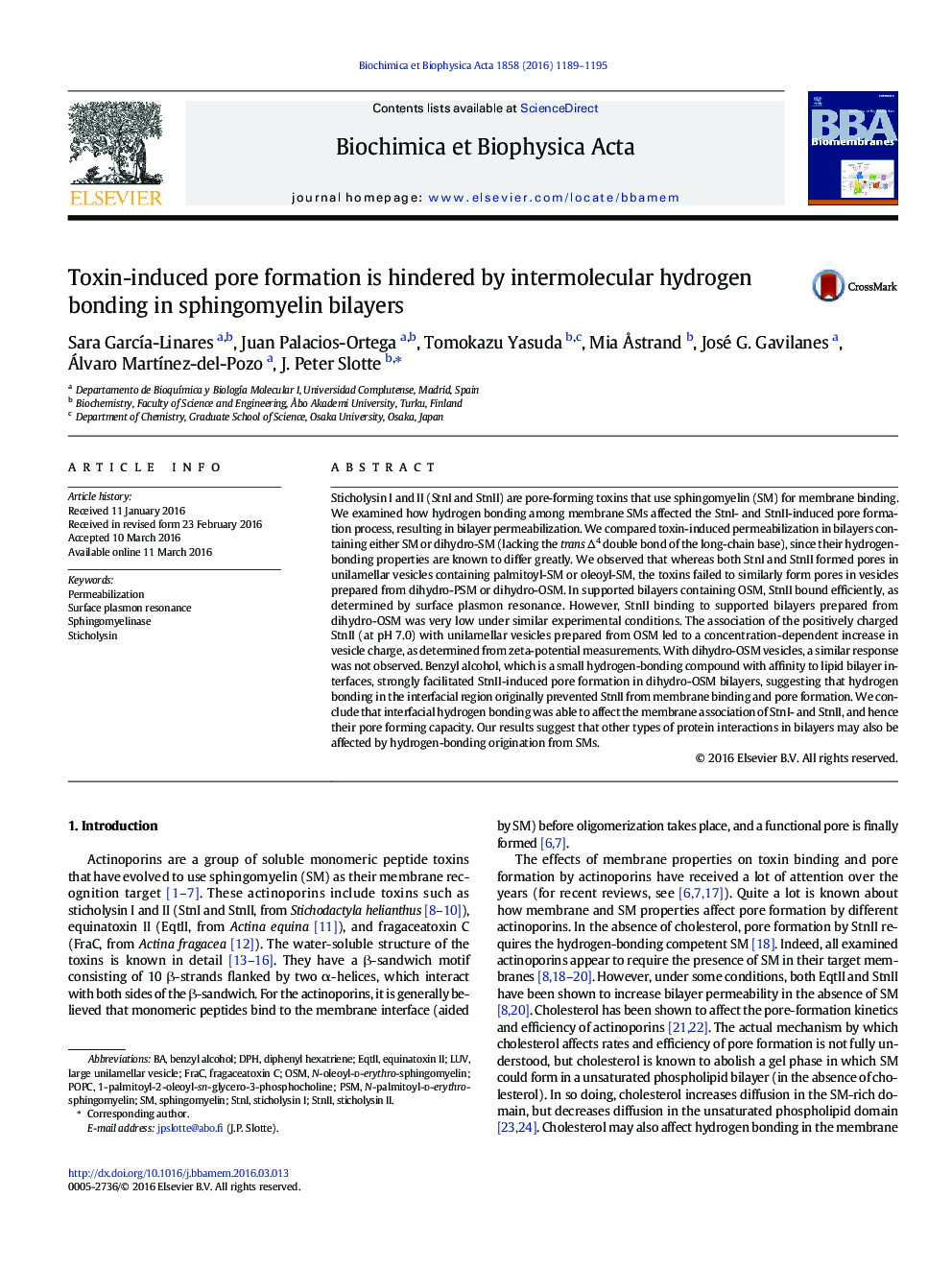| کد مقاله | کد نشریه | سال انتشار | مقاله انگلیسی | نسخه تمام متن |
|---|---|---|---|---|
| 1943969 | 1053169 | 2016 | 7 صفحه PDF | دانلود رایگان |
• Sphingomyelin and dihydro sphingomyelin hydrogen bond differently.
• Sticholysin binds to sphingomyelin and forms pores in fluid bilayers.
• Sticholysin failed to form pores in fluid dihydro sphingomyelin bilayers.
• Strong intermolecular hydrogen bonding appeared to hinder pore formation.
Sticholysin I and II (StnI and StnII) are pore-forming toxins that use sphingomyelin (SM) for membrane binding. We examined how hydrogen bonding among membrane SMs affected the StnI- and StnII-induced pore formation process, resulting in bilayer permeabilization. We compared toxin-induced permeabilization in bilayers containing either SM or dihydro-SM (lacking the trans Δ4 double bond of the long-chain base), since their hydrogen-bonding properties are known to differ greatly. We observed that whereas both StnI and StnII formed pores in unilamellar vesicles containing palmitoyl-SM or oleoyl-SM, the toxins failed to similarly form pores in vesicles prepared from dihydro-PSM or dihydro-OSM. In supported bilayers containing OSM, StnII bound efficiently, as determined by surface plasmon resonance. However, StnII binding to supported bilayers prepared from dihydro-OSM was very low under similar experimental conditions. The association of the positively charged StnII (at pH 7.0) with unilamellar vesicles prepared from OSM led to a concentration-dependent increase in vesicle charge, as determined from zeta-potential measurements. With dihydro-OSM vesicles, a similar response was not observed. Benzyl alcohol, which is a small hydrogen-bonding compound with affinity to lipid bilayer interfaces, strongly facilitated StnII-induced pore formation in dihydro-OSM bilayers, suggesting that hydrogen bonding in the interfacial region originally prevented StnII from membrane binding and pore formation. We conclude that interfacial hydrogen bonding was able to affect the membrane association of StnI- and StnII, and hence their pore forming capacity. Our results suggest that other types of protein interactions in bilayers may also be affected by hydrogen-bonding origination from SMs.
Inhibitory effects of sphingomyelin hydrogen bonding on sticholysin-induced pore formation.Figure optionsDownload high-quality image (351 K)Download as PowerPoint slide
Journal: Biochimica et Biophysica Acta (BBA) - Biomembranes - Volume 1858, Issue 6, June 2016, Pages 1189–1195
